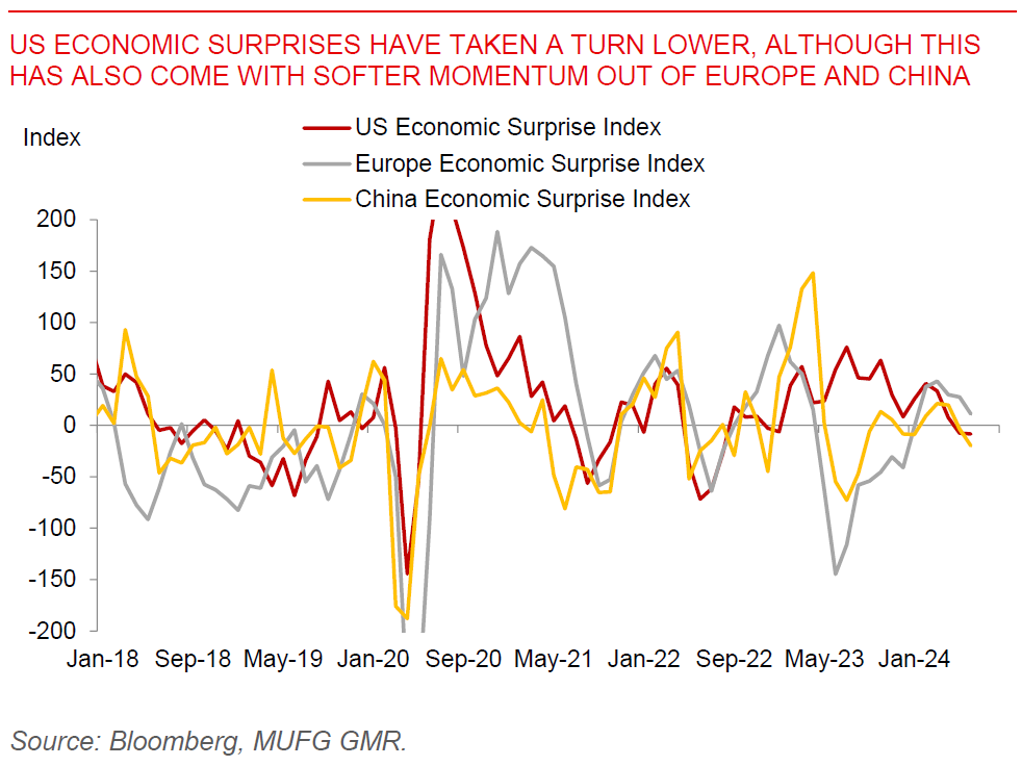Ahead Today
G3: Australia CPI, US Mortgage Applications, US New Home Sales
Asia: Singapore industrial production
Market Highlights
US consumer confidence softened a touch, led by a small decline in the expectations component to 73.0 from 74.9. Meanwhile, the Richmond Fed Manufacturing Index was weaker than expected at -10 from 0 previously. Overall, these data are in line with the trend of a somewhat softer US economy over the past few months, which together with initial signs of moderating inflation and continued rebalancing in the labour market has helped to cap US yields. On that note, the Fedspeak overnight was mixed, with Governor Michelle Bowman – a perennial hawk – seeing no rate cuts in 2024 and reiterating the need to keep the Fed Funds rate elevated for some time. On the flipside, Fed Governor Lisa Cook was more dovish, saying that the FOMC is paying attention to rising unemployment rate and that rising consumer delinquencies bears watching.
These trends in the US have nonetheless also come together with softening momentum in the rest of the world including out of Europe and China. Beyond the US data and PCE inflation numbers this Friday, investors and markets are watching closely for the political risks, including the upcoming French Elections on 30 June, together with the 1st US Presidential debate on 27 June US time. The Dollar was stronger by 0.2%, from some weakness to start this week, together with lower 10-year US yields at 4.24%.

Regional FX
Regional FX
Asian FX markets started the week on a decent note, with currencies such as IDR (+0.4%) and INR (+0.13%) strengthening. Nonetheless, there seems to be some reversal of gains in the Asia session reflecting the stronger Dollar overnight with KRW (-0.3%) and THB (-0.29%) weakening. India’s current account for 1Q2024 was in surplus of US$5.7bn, up from a US$8.7bn deficit the previous quarter. This was a larger surplus than both the consensus and ourselves were pencilling in. Relative to our expectations, the upside surprise was a 16%yoy rise in remittances growth, which together with a narrower goods deficit and seasonal factors helped to push up the current account. Overall, we maintain our reasonably constructive view on INR and think that the currency should continue to have low volatility. India’s current account deficit is expected to widen from here, but funding the deficit should be relatively easy given >US$20bn of bond index inclusion flows coupled with an expected pickup in FDI.

